

A notoriously easy succulent, the Sempervivum houseleek family is a pleasure to grow.
Houseleek, key facts
Botanical name: Sempervivum sp.
Common: Houseleek, Hen & Chicks
Family: Crassulaceae
Type: perennial ground cover
Height: 4 to 12 inches (10 to 30 cm) upon blooming
Planting density: 15-30 per sq. yard (/m²)
Exposure: full sun – Soil: any type, well drained – Blooming: early summer
The translation of its botanical name means “always alive”, which appropriately describes it: it is incredibly resistant.
As long as it has full sun, houseleek grows in any type of soil, even if it’s very shallow. You won’t need a spade to dig a deep hole for this one: a few inches (maximum 10 cm) is enough.
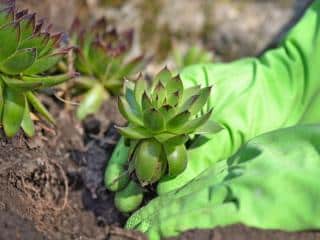
As for most succulents, drainage is the most important factor. This plant needs nearly no soil: pure gravel, pebbles or clay balls is perfect.
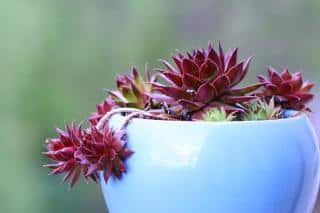 Make sure there’s a hole for water to drain out.
Make sure there’s a hole for water to drain out.For succulents, the saucer under a pot isn’t to catch excess water: it’s simply there to protect the furniture underneath, because there should never be any water in it!
Houseleek is a perennial that is satisfied with very little as long as it has lots of sun. Moreover, the astounding diversity of its many species allows for spectacular landscaping, especially in rocky terrain.
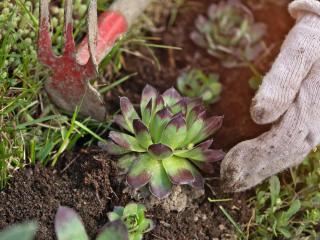
Rest assured: they’ll never all sprout blooms at the same time.
Watering? Just let rain do its thing. Even if it only rains a few times a year, your houseleek will just keep growing – just more slowly, of course.
No plant is easier to propagate than houseleek.
Generally speaking, Sempervivum is a very resistant botanical genus. Nonetheless, some species show occasional traces of rust. As for pests, young leaves might be targeted by slugs and the dreaded black vine weevil (Otiorhynchus sulcatus) which might cause damage on the entire plant depending on how advanced the infestation is: larvae destroy roots, while adults eat the leaves.
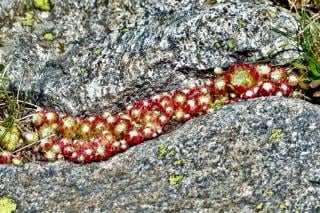
Slow growth and easy control make the a great choice for adding a little plant life in a mineral rock garden.
→ Discover: More examples of houseleek in rock gardens
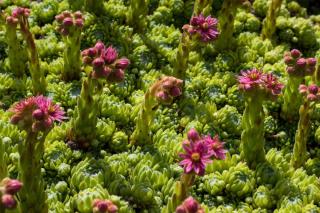
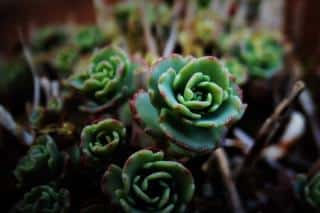
To add volume, medium-sized perennials like Heuchera, Iris and Anaphalis will do great.
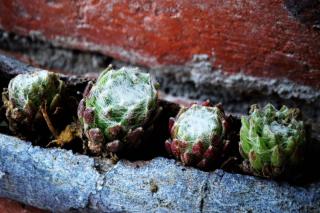 S. arachnoideum – also called spiderweb houseleek, this species is noteworthy due to its small size and density of its rosettes and the white strands that cover them over. Flowers are stunning as well, and beget a beautiful reddish-pink hue. Very original.
S. arachnoideum – also called spiderweb houseleek, this species is noteworthy due to its small size and density of its rosettes and the white strands that cover them over. Flowers are stunning as well, and beget a beautiful reddish-pink hue. Very original.Two colorful Sempervivum varieties are described here.